-
- PCB TYPE
- PRINTED CIRCUIT BOARD PROTOTYPE ALUMINUM PRINTED CIRCUIT BOARD R&F PCB FPC HIGH FREQUENCY PCB HIGH-TG PCB HEAVY COPPER PCB HDI PCB PCB FOR LIGHTING METAL CORE PCB
time:Jul 10. 2025, 09:24:35
In an era where energy conservation and environmental sustainability are at the forefront of technological advancements, energy efficient LED aluminum printed circuit boards (PCBs) have emerged as a transformative force in the lighting industry. These specialized PCBs combine the high luminous efficacy of light-emitting diodes (LEDs) with the superior thermal management capabilities of aluminum substrates, enabling the creation of lighting systems that consume less energy while delivering consistent, high-quality illumination. This article explores the engineering principles, material science, design strategies, and real-world applications of energy efficient LED aluminum PCBs, highlighting their role in driving the transition towards a more sustainable future for lighting technology.
The Synergy of LED and Aluminum PCB Technology
LED: The Energy-Efficient Light Source
Light-emitting diodes have revolutionized the lighting landscape with their remarkable energy efficiency. Unlike traditional incandescent and fluorescent bulbs, LEDs convert a significantly higher percentage of electrical energy into visible light, minimizing energy loss as heat. This fundamental characteristic makes LEDs an ideal choice for reducing energy consumption in lighting applications. However, to fully harness the energy-saving potential of LEDs, effective thermal management is essential. Excessive heat can degrade LED performance, leading to reduced light output, color shift, and shortened lifespan. This is where aluminum PCBs come into play.
Aluminum PCB: The Thermal Solution
Aluminum PCBs are designed with a focus on thermal management, leveraging the high thermal conductivity of aluminum. The aluminum substrate serves as an efficient heat sink, rapidly dissipating the heat generated by the LEDs. This prevents thermal buildup, ensuring that the LEDs operate within their optimal temperature range. By maintaining low junction temperatures, aluminum PCBs enhance the efficiency and longevity of LEDs, further contributing to energy savings. The combination of LEDs and aluminum PCBs creates a symbiotic relationship, where the energy-efficient light source is supported by an effective thermal management system, resulting in highly efficient lighting solutions.
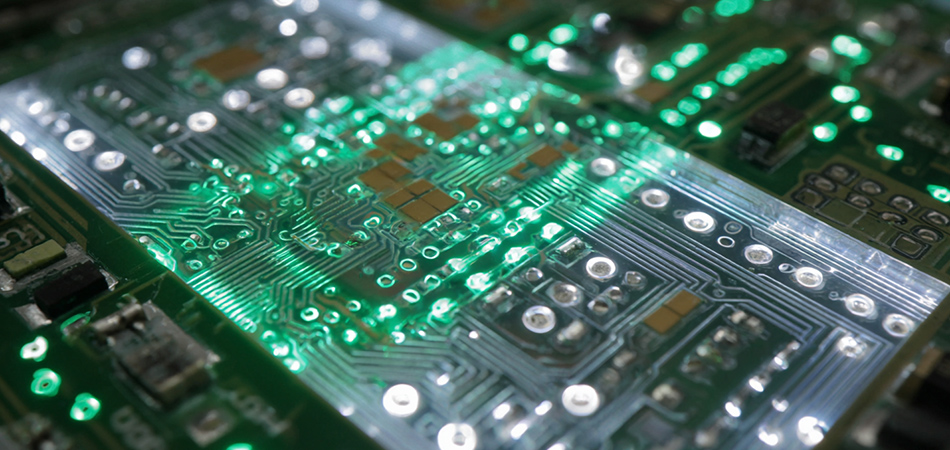
Material Science Behind Energy Efficient LED Aluminum PCBs
Aluminum Substrate: The Thermal Backbone
The aluminum substrate is the core component of these PCBs, providing several key advantages for energy-efficient LED lighting. Its high thermal conductivity allows for rapid heat transfer away from the LEDs, reducing the risk of overheating. Additionally, aluminum alloys offer a good balance of strength and formability, enabling the creation of lightweight and durable PCBs that can be easily integrated into various lighting fixtures. The mechanical stability of the aluminum substrate ensures that the PCB can withstand the rigors of different environments, from the vibrations in automotive lighting to the temperature fluctuations in outdoor applications, without compromising its thermal performance.
Dielectric Layers: Balancing Insulation and Heat Transfer
Sandwiched between the aluminum substrate and the copper layers, the dielectric layers play a crucial role in the performance of energy efficient LED aluminum PCBs. These layers provide electrical insulation, preventing short circuits between the aluminum core and the copper conductive pathways. At the same time, they are engineered to have high thermal conductivity, facilitating the efficient transfer of heat from the LEDs to the aluminum substrate. The choice of dielectric material is critical, as it directly impacts the thermal resistance of the PCB. High-quality dielectric materials, such as ceramic-filled epoxies or polyimides, are commonly used to strike the right balance between electrical insulation and thermal transfer, ensuring optimal performance of the LED lighting system.
Copper Layers: Conductive Pathways for Efficiency
The copper layers in energy efficient LED aluminum PCBs are responsible for carrying electrical current to the LEDs. Copper's low electrical resistance ensures that minimal energy is lost as heat during the transmission of power, enhancing the overall efficiency of the lighting system. The design of the copper traces is optimized to minimize resistance and voltage drops, ensuring that the LEDs receive a consistent and stable power supply. Additionally, the copper layers can be patterned to create dedicated power and signal traces, enabling the integration of advanced features such as dimming control and smart lighting functionality, which further contribute to energy savings by allowing users to adjust the light output according to their needs.
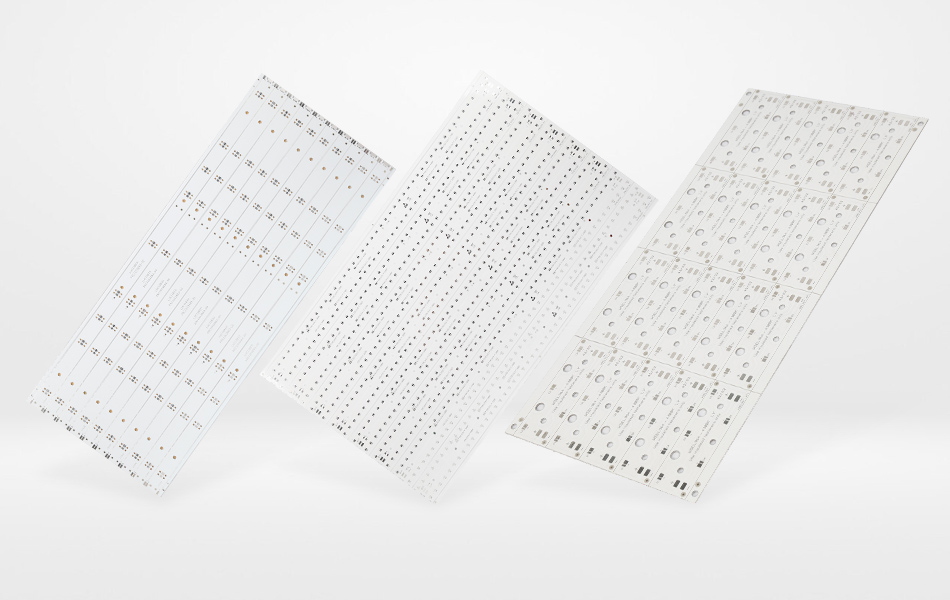
Design Strategies for Energy Efficiency
Thermal Management Optimization
Effective thermal management is the cornerstone of energy-efficient LED lighting design. In energy efficient LED aluminum PCBs, several strategies are employed to maximize heat dissipation. LEDs are strategically placed on the PCB to ensure maximum contact with the aluminum substrate, facilitating direct heat transfer. Thermal vias, which are small holes filled with a conductive material, are used to connect the copper layers to the aluminum core, creating additional pathways for heat to flow from the LEDs to the heat sink. This helps to reduce thermal resistance and ensures that heat is dissipated quickly and efficiently. In some cases, external heat sinks may also be used in conjunction with the aluminum PCB to further enhance heat dissipation, especially in high-power LED applications.
Electrical Design for Minimal Loss
The electrical design of energy efficient LED aluminum PCBs is focused on minimizing energy loss during power transmission and distribution. The copper traces are designed with a specific width and thickness to handle the required current without excessive resistance. Power planes are used to distribute power evenly across the PCB, reducing voltage drops and ensuring that all LEDs receive the same amount of power. Additionally, the use of high-quality components, such as efficient LED drivers and capacitors, helps to minimize energy losses within the circuit. By optimizing the electrical design, these PCBs can achieve high power conversion efficiency, reducing energy consumption and operating costs.
Optical Design for Light Utilization
In addition to thermal and electrical design, optical design also plays a crucial role in the energy efficiency of LED lighting systems. Energy efficient LED aluminum PCBs are designed to work in conjunction with optical components, such as lenses and reflectors, to direct and control the light output. By optimizing the placement and orientation of the LEDs on the PCB, as well as the design of the optical components, the amount of light that is wasted or lost can be minimized. This ensures that the maximum amount of light is utilized for illumination, reducing the need for additional LEDs and further contributing to energy savings.
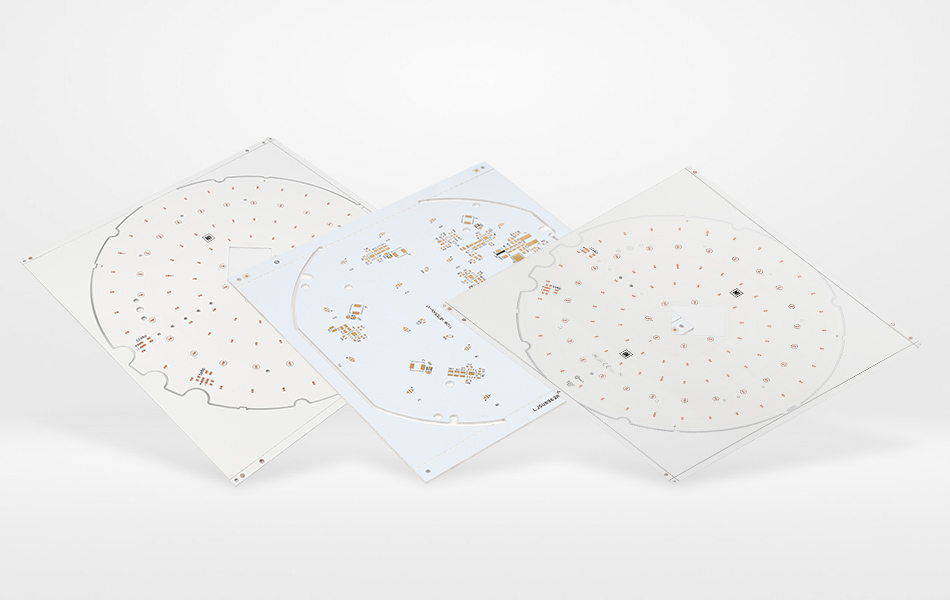
Manufacturing Processes for High-Quality PCBs
Substrate Preparation
The manufacturing process of energy efficient LED aluminum PCBs begins with the preparation of the aluminum substrate. The substrate is first cut to the desired size and shape using precision cutting techniques, such as CNC milling or laser cutting. It is then subjected to surface treatments, including degreasing and micro-etching, to remove any contaminants and improve the adhesion of the dielectric layers. These surface treatments are essential for ensuring a strong bond between the aluminum substrate and the dielectric materials, which is critical for the thermal and electrical performance of the PCB.
Layer Lamination
After the substrate preparation, the dielectric layers are laminated onto the aluminum substrate. High-pressure lamination processes are used to bond the dielectric materials firmly, creating a uniform thermal interface. The lamination process requires precise control of temperature, pressure, and time to ensure that the dielectric layers are bonded evenly and without any voids or defects. Once the lamination is complete, the copper layers are then laminated onto the dielectric surfaces.
Copper Layer Fabrication
The fabrication of the copper layers involves several steps, including photolithography, etching, and plating. Photolithography is used to transfer the circuit patterns onto the copper foil, which is then etched to remove the unwanted copper. The remaining copper forms the conductive traces and pads on the PCB. Plating processes, such as electroless copper plating and electroplating, are used to increase the thickness and conductivity of the copper layers, ensuring reliable electrical connections.
Surface Finishing and Assembly
To protect the copper layers from oxidation and improve solderability, surface finishes such as electroless nickel immersion gold (ENIG), organic solderability preservative (OSP), or hot air solder leveling (HASL) are applied. Once the surface finishing is complete, the LEDs and other components are assembled onto the PCB using automated pick-and-place machines. Reflow soldering or wave soldering processes are then used to attach the components to the PCB, creating a fully functional LED lighting module.
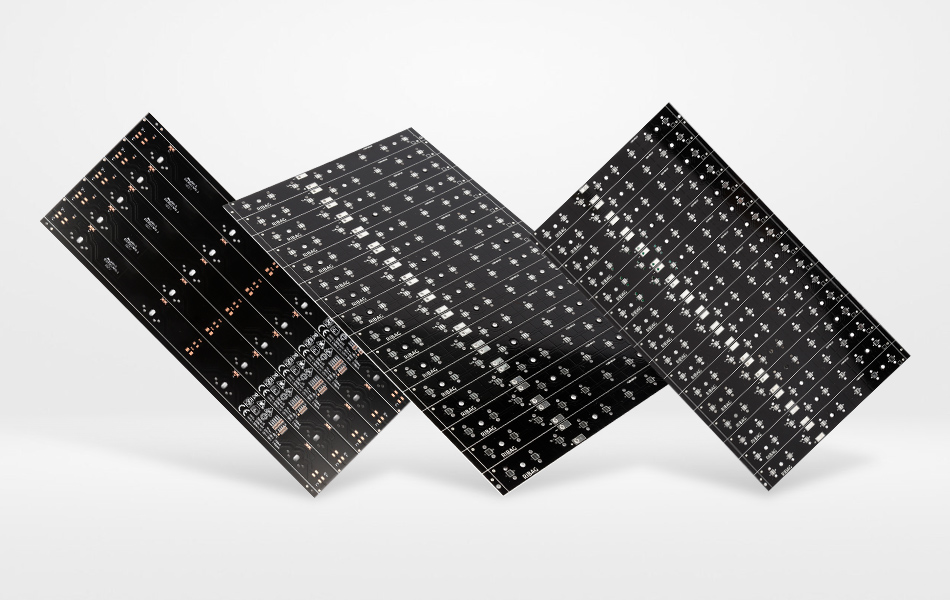
Applications of Energy Efficient LED Aluminum PCBs
Commercial Lighting
In commercial buildings, energy efficient LED aluminum PCBs are widely used in a variety of lighting applications, including office lighting, retail lighting, and hospitality lighting. These PCBs enable the creation of high-brightness, energy-efficient LED panels and fixtures that can provide uniform illumination while consuming significantly less energy than traditional lighting solutions. The long lifespan and low maintenance requirements of LED lighting systems based on these PCBs also make them a cost-effective choice for commercial applications, reducing the total cost of ownership over the lifetime of the lighting installation.
Residential Lighting
Residential lighting is another area where energy efficient LED aluminum PCBs are making a significant impact. From recessed downlights and track lighting to decorative pendant lights and outdoor lighting, these PCBs are being used to create energy-efficient, stylish, and functional lighting solutions for homes. The ability to dim the LEDs and control the color temperature using smart lighting systems further enhances the energy savings and user experience, allowing homeowners to customize the lighting according to their preferences and needs.
Outdoor Lighting
Outdoor lighting applications, such as streetlights, parking lot lights, and landscape lighting, require robust and energy-efficient lighting solutions. Energy efficient LED aluminum PCBs are well-suited for these applications, as they can withstand the harsh outdoor environment while providing reliable and energy-efficient illumination. The high thermal conductivity of the aluminum substrate ensures that the LEDs remain cool even in direct sunlight, preventing performance degradation and extending the lifespan of the lighting system. Additionally, the use of motion sensors and daylight harvesting technologies in conjunction with these PCBs can further reduce energy consumption by automatically adjusting the light output based on the presence of people and the amount of natural light available.
Automotive Lighting
In the automotive industry, energy efficient LED aluminum PCBs are increasingly being used in headlights, taillights, and interior lighting systems. The compact size and high energy efficiency of these PCBs make them ideal for automotive applications, where space is limited and energy conservation is important. The ability to control the light output precisely using advanced LED drivers and control systems also enables the creation of intelligent lighting features, such as adaptive headlights that can adjust the beam pattern based on the driving conditions, enhancing safety and visibility on the road.
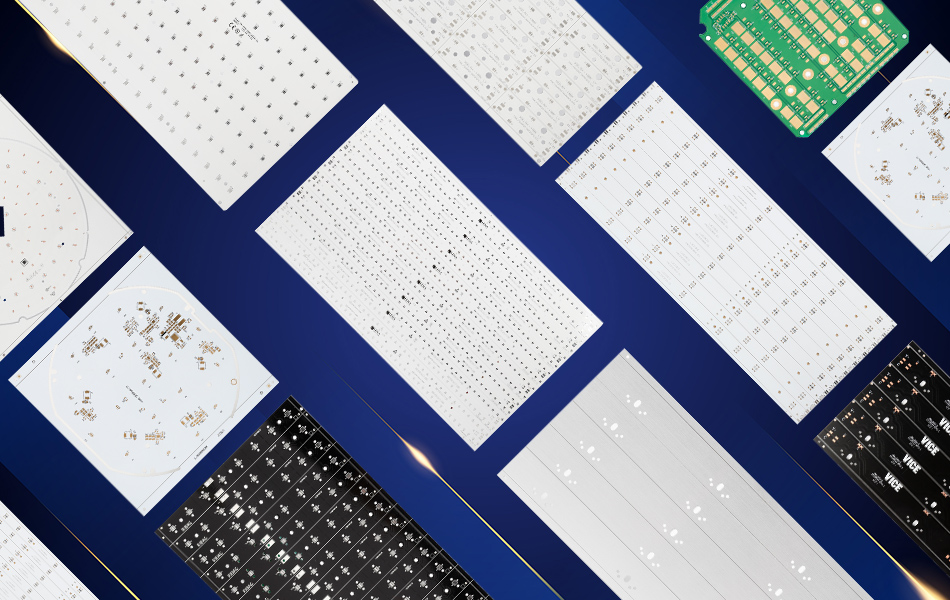
Emerging Trends and Future Outlook
Smart Lighting Integration
The integration of energy efficient LED aluminum PCBs with smart lighting technologies is one of the most significant trends in the lighting industry. Smart lighting systems use sensors, wireless communication, and advanced control algorithms to automatically adjust the light output based on factors such as occupancy, daylight levels, and user preferences. By integrating these PCBs with smart lighting technologies, it is possible to create lighting systems that are not only energy-efficient but also highly intelligent and user-friendly. This trend is expected to continue as the demand for smart buildings and connected homes grows.
Miniaturization and High-Density Integration
As the demand for more compact and powerful LED lighting solutions increases, there is a growing trend towards miniaturization and high-density integration of components on energy efficient LED aluminum PCBs. Advanced manufacturing techniques, such as laser-drilled microvias and fine-pitch trace routing, are being used to pack more components onto the PCB while maintaining optimal performance. This allows for the creation of smaller, more energy-efficient lighting fixtures that can be integrated into a wider range of applications, from wearable lighting devices to ultra-slim architectural lighting.
Sustainable Manufacturing Practices
In response to growing environmental concerns, the lighting industry is increasingly adopting sustainable manufacturing practices for energy efficient LED aluminum PCBs. This includes the use of recycled materials for the aluminum substrate and copper layers, as well as the implementation of eco-friendly manufacturing processes. Additionally, efforts are being made to improve the recyclability of the PCBs at the end of their life cycle, reducing the environmental impact of electronic waste. These sustainable manufacturing practices are not only beneficial for the environment but also help to reduce the cost of production, making energy-efficient LED lighting more accessible and affordable.
Conclusion
Energy efficient LED aluminum PCBs have emerged as a key technology in the quest for sustainable illumination. By combining the energy-saving benefits of LEDs with the superior thermal management capabilities of aluminum substrates, these PCBs enable the creation of lighting systems that consume less energy, last longer, and require less maintenance. From commercial and residential lighting to outdoor and automotive applications, energy efficient LED aluminum PCBs are transforming the way we light our world. As the industry continues to evolve, driven by emerging trends such as smart lighting integration, miniaturization, and sustainable manufacturing, these PCBs are expected to play an even more important role in shaping the future of lighting technology, contributing to a more energy-efficient and environmentally friendly world.

Got project ready to assembly? Contact us: info@apollopcb.com



We're not around but we still want to hear from you! Leave us a note:

Leave Message to APOLLOPCB
